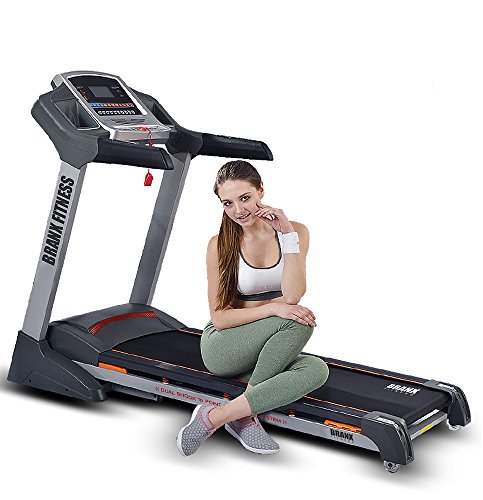Discovering the Manual Incline Treadmill: A Comprehensive Guide
As the physical fitness industry continuously progresses, with brand-new gadgets and devices striking the market, one tool has actually stayed a staple in many homes and fitness centers: the treadmill. Particularly, the manual incline treadmill provides a distinct approach to cardiovascular fitness training. This guide looks into the functions, advantages, and considerations of using a manual incline treadmill.
What is a Manual Incline Treadmill?
A manual incline treadmill is a non-motorized treadmill that needs users to power their movement by walking or running on the belt. Unlike conventional treadmills, which depend on electrical power to move the belt, manual incline treadmills depend solely on the user's energy. The incline setting, which can be changed, helps replicate uphill running, supplying an effective exercise.
Key Features of Manual Incline Treadmills
| Feature | Description |
|---|---|
| Manual Operation | Users should propel the belt themselves, making it a self-paced exercise. |
| Adjustable Incline | Incline settings can be changed, using varied resistance for a harder obstacle. |
| Compact Design | Often more lightweight and compact than motorized treadmills, making them simpler to keep. |
| Long lasting Construction | Normally developed with durable materials, created to endure strenuous use. |
| Digital Display | Some designs might feature a fundamental digital display to reveal time, distance, and calories burned. |
Advantages of Using a Manual Incline Treadmill
1. Boosted Cardiovascular Fitness
The manual incline treadmill efficiently elevates heart rate, resulting in enhanced cardiovascular health. The incline setting needs more effort from the muscles, thus increasing the overall exercise intensity.
2. Customizable Workouts
With manual treadmills, users have complete control over their rate and incline. This feature permits them to customize exercises to align with physical fitness objectives, whether concentrating on endurance building or interval training.
3. Lower Operating Costs
Manual incline treadmills do not need electricity, making them an economical alternative to standard treadmills. This economical aspect appeals to those seeking to boost their home health club without incurring high energy expenses.
4. Engaging Full-Body Workout
Running or walking on an incline engages multiple muscle groups, including the legs, glutes, and core. This total-body activation assists tone and reinforce the body while burning extra calories.
5. Decreased Risk of Injury
The low-impact nature of a manual incline treadmill can be less taxing on the joints compared to high-impact aerobic workouts. However, users should still practice good type and start slowly to minimize the risk of strains or injuries.
Considerations When Using a Manual Incline Treadmill
Safety First
While manual incline treadmills have lots of benefits, there are some safety factors to consider to keep in mind:
- Falling Hazard: Since users propel the belt themselves, it's essential to maintain a stable speed to avoid losing balance.
- Incline Levels: Adjusting the incline during use can be difficult and requires cautious attention to preserve stability.
Appropriate Form and Technique
To maximize the benefits while reducing the risk of injury, users need to stress appropriate running or walking form. This consists of keeping the back straight, shoulders unwinded, and arms in a natural position.
How to Choose the Right Manual Incline Treadmill
Picking the best manual incline treadmill is paramount to attaining physical fitness objectives. Below are essential elements to consider:
| Criteria | Recommendations |
|---|---|
| Weight Capacity | Ensure the treadmill can support your weight; most have capacities ranging from 250 to 400 pounds. |
| Adjustability | Search for treadmills with numerous incline settings to provide workout variety. |
| Portability | Consider foldable designs if storage area is restricted. |
| Convenience Features | Check for non-slip surfaces and cushioned running locations to improve convenience. |
Often Asked Questions (FAQ)
1. How do I maintain a manual incline treadmill?
To keep a manual treadmill, frequently check the belt for wear and ensure it operates smoothly. Clean the frame and running surface area, and inspect the bolts and screws for signs of loosening.
2. Is a manual incline treadmill appropriate for newbies?
Yes, manual incline treadmills can be appropriate for novices. Users can begin at a slow speed and gradually increase strength. However, it's crucial to comprehend one's physical fitness level and begin thoroughly.
3. Can Walking Treadmill carry out interval training on a manual incline treadmill?
Definitely. The adjustable incline feature allows users to create different exercises, perfect for interval training. Alternate in between walking and running at different inclines to keep exercises engaging and challenging.
4. Is a manual incline treadmill quieter than a motorized one?
Yes, due to the absence of a motor, manual incline treadmills usually run more silently, making them an outstanding option for shared spaces.
5. How much space do I need for a manual incline treadmill?
Manual incline treadmills usually occupy less area than motorized models. Nevertheless, users ought to guarantee there's adequate area for motion around the treadmill for security.
The manual incline treadmill offers an unique blend of advantages and versatility, making it an exceptional option for those seeking to enhance their exercise regimen without depending on electrical power. From improved cardiovascular physical fitness to personalized training alternatives, it offers an extensive method to physical fitness. By understanding its functions, benefits, and safety factors to consider, users can choose the best model and integrate it successfully into their workout regimen. Whether utilized in a home gym or a larger physical fitness center, a manual incline treadmill can be an important tool for those concentrated on fitness.

